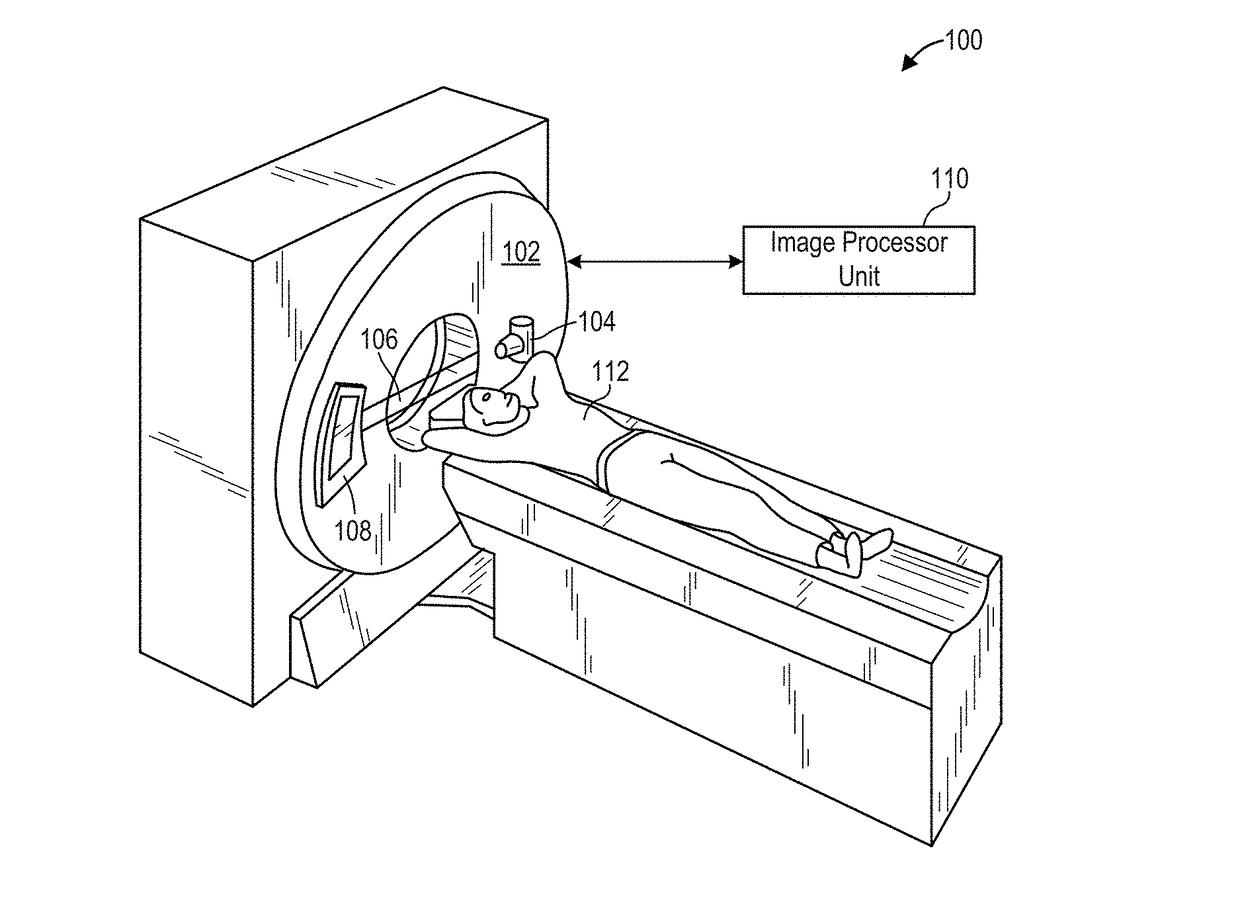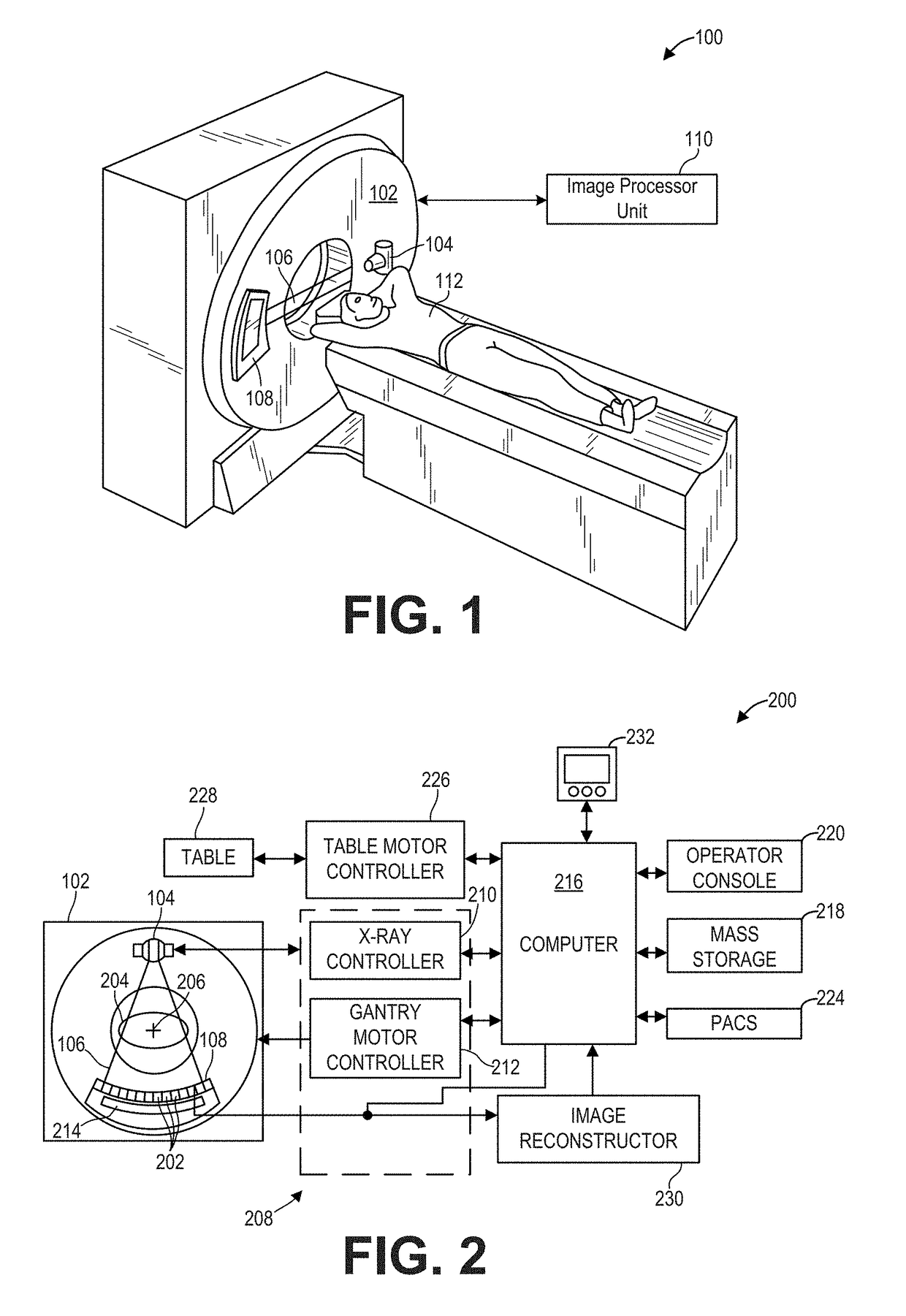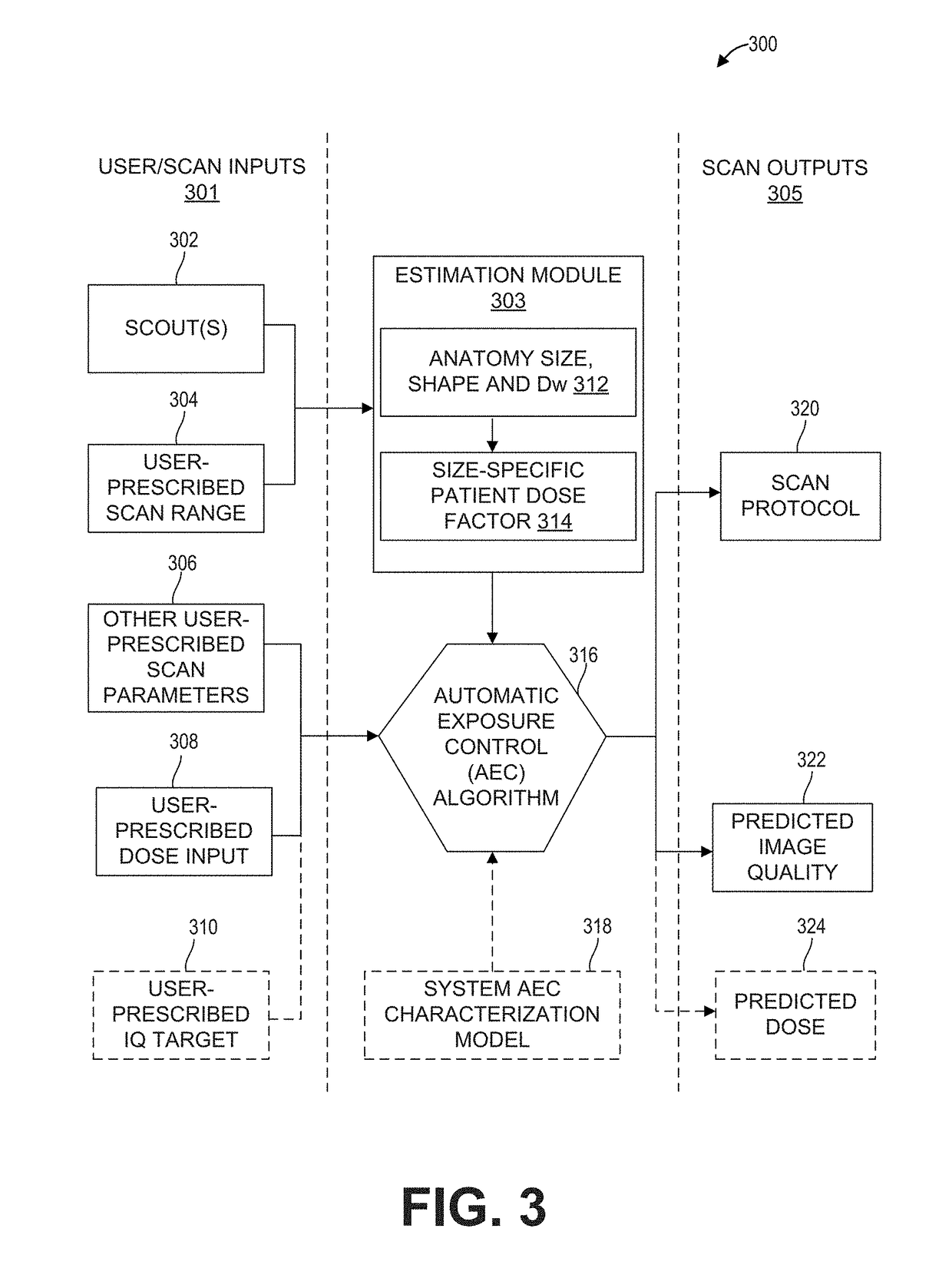Methods and systems for computed tomography
a computed tomography and computed tomography technology, applied in the field of non-invasive diagnostic imaging, can solve problems such as the inability to govern a priori patient exposur
- Summary
- Abstract
- Description
- Claims
- Application Information
AI Technical Summary
Benefits of technology
Problems solved by technology
Method used
Image
Examples
Embodiment Construction
[0015]The following description relates to various embodiments of medical imaging systems. In particular, methods and systems are provided for automatic exposure control. An example of a computed tomography (CT) imaging system that may be used to acquire images processed in accordance with the present techniques is provided in FIGS. 1 and 2. CT systems may include an automatic exposure control (AEC) feature described in FIG. 3, wherein the output level of the source may be adjusted based on one of a user-prescribed dose input or image quality input (FIG. 5). Herein, a user may prescribe patient-specific dose metric input or an image quality input via a user interface as shown in FIG. 4. When a dose metric input is received, a method shown in FIG. 6, may include determining parameters of a diagnostic scan based on the dose metric input received, and further predicting an image quality of the diagnostic scan based on the dose metric input. Likewise, when an image quality input is rece...
PUM
 Login to View More
Login to View More Abstract
Description
Claims
Application Information
 Login to View More
Login to View More - R&D
- Intellectual Property
- Life Sciences
- Materials
- Tech Scout
- Unparalleled Data Quality
- Higher Quality Content
- 60% Fewer Hallucinations
Browse by: Latest US Patents, China's latest patents, Technical Efficacy Thesaurus, Application Domain, Technology Topic, Popular Technical Reports.
© 2025 PatSnap. All rights reserved.Legal|Privacy policy|Modern Slavery Act Transparency Statement|Sitemap|About US| Contact US: help@patsnap.com



